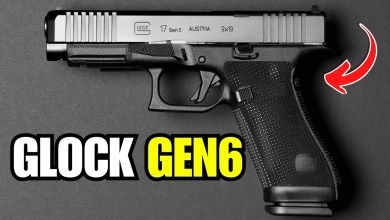Katabatic Alsek 22 Review: Cold Sleepers Rejoice — This Sleeping Quilt Works for All

I hit about mile 200 before I swallowed the bitter pill: I might not be cut out for this sleeping quilt thing. It was half a month into my thru-hike of the Pacific Crest Trail, and while the days crossing the sand-filled basins brutalized with heat, the nights along the high-rising desert ridges plunged to near freezing.
I also found myself near freezing in my fancy new quilt — a backless sleeping bag that promised to do away with the frivolous extra material that sought to weigh me down. After those nights, I made do with that quilt and finished the trail with it, but the issue stuck with me — until I jumped in the Katabatic Alsek 22.
This, I am now assured, is the sleeping quilt perfected. With one of the best pad attachment systems on the market (adios, drafts), a fully enclosed footbox, and a comfort-first temperature rating, the Alsek keeps weight down without losing the plot on its job: to keep you warm overnight.
In short: I’ve tested the Alsek for half a year now, and through multiple seasons, it’s kept this chronically cold sleeper from my regular regimen of midnight jumping jacks. This is what I’ve learned about this stellar quilt over 6 months of steady use.
Looking for a new backpacking sleeping system? Check out how the Katabatic Alsek 22 compares to other sleeping quilts and bags in GearJunkie’s Best Backpacking Sleeping Bags Buyer’s Guide.
-
Conservatively temperature rated for most folks -
Impressively small packed size -
Wide range of sizes and different down fill types available -
Highly adjustable and draft-free pad system -
Well-stuffed draft collar
-
Quilt can’t be converted fully into a blanket on warm nights -
Bit pricier than some comparable quilts out there
Katabatic Alsek 22 Quilt: Review
All things work in some great circle, including this review. To properly test the Katabatic Alsek, I broke it in by returning to the PCT, but only a bit closer to home this time. Over the 75 miles of Washington’s Section J, I first used this quilt during a late-season section hike last October, where I really got to know the ins and outs.
The Alsek is the 22-degree version of Katabatic’s Elite line, and likely the most popular temperature rating of its closed-footbox offerings. The Colorado-based brand also produces a line of convertible quilts that unzip entirely, but for reasons we’ll get into below, I’m on team #closedfootbox.
Zooming out, sleeping quilts are more popular than ever (even if that market slice is still somewhat small). The versatility of a quilt makes a strong case for itself for many backpackers, and the weight and bulk you’ll save is easy to make up elsewhere in luxury items (the difference between the Alsek and even the weight-conscious Feathered Friends Swallow UL 20 sleeping bag is four Snickers bars — an easy trade).
But, the caveat, of course, is that it’s got to keep you warm to make the swap worthwhile. While my first quilt didn’t quite deliver when the mercury dipped, the Alsek showed me that backpacking sleeping quilts can work for everyone.
Locked-Down Pad Attachment System
Hot take: I don’t think the sleeping quilts work exceptionally well below 32 degrees Fahrenheit. The cold-sapping ability of a few seconds of a draft is enough to take the warmth out of you, and if you’re an acrobatic sleeper like me, that adds up. This makes a pad-attachment system essential.
Since the idea behind a backless quilt is leaning on your backpacking sleeping pad to keep your flipside warm, you’re missing out if you don’t mate up the pair well. I’ve used a handful of different systems through a few quilts, and I can say that Katabatic nails it in its bags.
This system (patented, so you know it’s legit) revolves around two 2mm cords that encircle your pad. You attach four plastic clips to these cords on the back opening, which you can slide to open or close the back and lock into place. Flanking these are some additional mitten clips, which help keep the quilt in place. And keep it in place, they do.
The second night of my section hike saw us land at Deep Lake for the night — a 4,500-foot-elevation cold sink. October was in full force, and while frost covered our tent and footboxes by morning, I was none the wiser overnight. The cord system accommodates pretty much any width sleeping pad, and on top of all this, the edges of the open back are all covered in elastic binding, making for an opening that wants to seal shut.
I initially hesitated, worrying that one of these flat cord clips might catch an odd edge while I slept on it and puncture my pad, but that worry proved unfounded: the clips themselves lie very flat when the cord system holds them snugly.
A Peek Under the Hood
A solid pad attachment system is a moot point if the quilt itself is bunk. Thankfully, the Alsek is anything but when you check out the cross-section and dive into the baffles.
Let’s start with the down. Katabatic offers the Alsek in both a hydrophobic 850 fill-power duck down and a 900 FP goose down (the choice is one of the benefits of going with a smaller company still willing to twist the dials for you). I tested the 850 fill version, and in the regular wide cut, I netted 16.6 ounces of the stuff, which works out to about 2.75 inches of loft.
A small note here on DWR-treated down: Credible studies show that down treated with a DWR often takes a small hit in fill rating and that real-world performance is often not worth the extra labor and expense. Other high-end sleeping bag manufacturers like Feathered Friends and Western Mountaineering don’t use DWR-treated down.
To be fair, the Alsek’s ExpeDRY treatment is a bit different. Instead of a sprayed-on treatment, Allied Feather (which Katabatic sources from) bonds gold particles to the down and creates an electrostatic shield that prevents water from gathering as easily. This is high-tech stuff, and my long-term conclusion is in the works, but first impressions? This is a tough quilt to dampen.
Zooming out, a differential cut to the baffles means that the interior panels are slightly smaller than the exterior, giving them a trapezoidal shape. This allows for sufficient space for down to loft when the bag is cinched in close, which means more warmth across all quilt configurations.
I’ve taken the Alsek on 7-day-long backpacking trips now, where it’s retained its loft after repeated compression, and bounced back from getting a wet footbox in damp single-wall shelters.
My first quilt had a footbox that unzipped entirely, splitting the bag to be used as a blanket on especially hot nights. I never used it. When I tried, even if the evening started warm enough to go blanket-mode, 3 a.m. would roll around and temps would drop enough to send me zipping the footbox back together.
On the other hand, the closed footbox of the Alsek retains as much warmth as possible compared to those that can be fully unzipped, and while you don’t get complete versatility with this setup, for cold sleepers like me, it’s essential. I can always kick a foot out if need be.
Additionally, going with a closed footbox means getting a shaped version that provides a kick at the toe end. This “trapezoidal” footbox, as Katabatic calls it, bumps up the space for your feet when you’re sleeping on your back, and while I used to get cold spots on my toes from pushing through the insulation, it’s a non-issue on the Alsek.
To accommodate the lesser venting options, I went with a wide Alsek, which adds 4 inches of width across the bag’s shoulder, hip, and footbox sections. I’m a more slight hiker, so on warmer nights I spread the quilt out wider, and when I need the warmth, I slide the pad attachment clips so that they almost touch behind my back, effectively closing the quilt up.
While every night of my recent section hike required the full batten-down-the-hatches treatment, I’ve also used the Alsek fully splayed open on a few trips to the Olympic Peninsula, while truck camping, and during a late summer climb of one of Washington’s resident volcanoes, Kulshan. There’s a bit of a compromise when temps are high, but one I’ll happily make for the ability to stay warm when I need it.
When Doesn’t the Alsek Win?
Like I mentioned before, 32 degrees F is just about where I call it on sleeping quilts and start wishing I had carried a full sleeping bag with me. The Alsek is the exception. When cinched close (and wearing base layers and a thin fleece up top), I have taken this quilt through nights that froze my water overnight.
As a cold sleeper, however, taking the Alsek all the way down to the 22 degrees it’s rated at (note: this isn’t an ISO or EN rating, but an in-house comfort rating) requires a good bit more clothing than I typically carry when hiking. Perusing reviews and speaking with other Alsek owners shows that I’m the exception, not the rule: Most agree that the Alsek is comfortably right down to the rating.
You’ll also pay a bit more for the Alsek, although not that much more comparatively. An Enlightened Equipment Revelation 20 quilt in 850 fill-power duck down (with an add-on draft collar, add $20) will run you $365 — only $14 more. The $379 price tag of the Alsek is more than middle-tier 20-degree bags like the $285 Mountain Hardwear Bishop Pass, but the Katabatic is undeniably a more specialized piece of kit.
Truthfully, the only real downside to the Alsek is its popularity: Katabatic regularly runs a delay on shipment for some variations of the quilt, ranging from a few days to 5months currently for the 6’6” version. Got a trip coming up? Plan accordingly.
Katabatic Alsek Quilt: Conclusion
By the end of my 5-day PCT section hike, there was little doubt left: the Katabatic Alsek was the antidote to my chilly-night sleeping quilt issue. The pad attachment system is hard to mess up, and just works at keeping drafts from creeping in. Add to that a comfort rating that’s no joke and a small compact size and weight, and this is the sleeping quilt refined.
Are sleeping quilts for everyone? Not quite. Many won’t want the fuss of setting up a pad attachment system every night, and for those who aren’t chasing the bottom of the scale when it comes to backpacking equipment, the weight and bulk savings won’t make sense.
But is this the sleeping quilt for those whose goals align? I’d say so. And if not the 22-degree Alsek, Katabatic also makes the 40-degree Chisos, 30-degree Palisade, 15-degree Sawatch, and 5-degree Grenadier quilts. The design is solid across the range.
If you’re whittling down your backpacking kit but maybe not willing to make the types of sacrifices that involve snoozing on ¼-inch torso-length foam pads, consider the Alsek. This quilt balances the scales well.
Read the full article here








